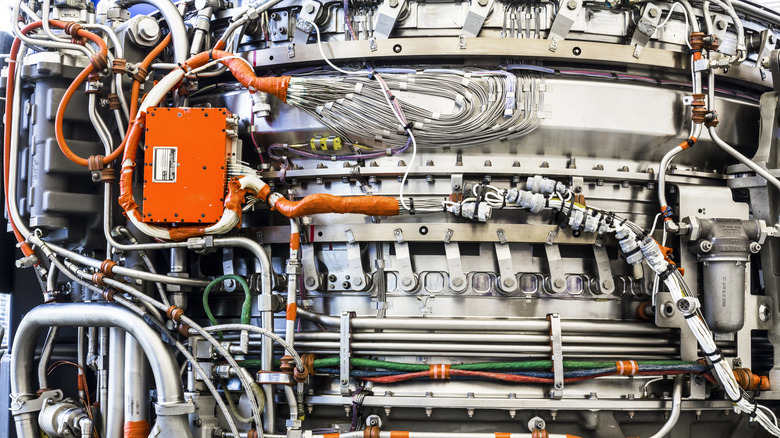F-35's F135: Unleashing Unrivaled Power

The F135 turbofan engine, manufactured by Pratt & Whitney, is the powerhouse behind every variant of the F-35 Lightning II, solidifying its position as one of the most advanced fighter jet engines currently in operation. This engine, born from the lineage of the F119 engine that propels the F-22 Raptor, has been meticulously tailored to meet the diverse and demanding mission requirements of the F-35.
Delivering over 40,000 pounds of thrust, the F135 incorporates the most sophisticated engine control system globally, granting the aircraft exceptional agility and speed. Its design incorporates advanced signature and thermal management technologies, alongside integrated prognostic health monitoring, making it both intelligent and highly adaptable.
Versatility and Commonality Across F-35 Variants
A key strength of the F135 lies in its ability to support all three F-35 variants:
- F-35A: Conventional Takeoff and Landing (CTOL)
- F-35B: Short Takeoff/Vertical Landing (STOVL)
- F-35C: Carrier-Based (CV)
This commonality offers significant advantages, including global parts sharing, streamlined logistics, and faster maintenance turnaround times. It also ensures consistent performance across all platforms, facilitating standardization and scalability of operations for both U.S. forces and allied nations.
A Proven Track Record and Continued Evolution
Since entering service in 2009, the F135 has accumulated over one million flight hours, a testament to its reliability and performance. It is supported by a mature sustainment network encompassing 32 bases and 12 ships, ensuring mission readiness from domestic airfields to forward-deployed aircraft carriers.
Recognizing the evolving nature of modern threats, the Pentagon announced in 2023 that it would pursue an upgrade to the F135 engine through Pratt & Whitney's Engine Core Upgrade (ECU) program, rather than opting for a complete engine replacement. This strategic decision prioritizes enhanced thrust and thermal management capabilities without incurring the substantial costs and risks associated with integrating an entirely new powerplant, such as GE's XA100. The ECU program ensures the F135 remains a relevant and effective asset for years to come.
The Engine Core Upgrade: A Practical and Cost-Effective Solution
The Pentagon's decision to support the F135 Engine Core Upgrade over a completely new adaptive engine design was driven by practicality as much as budget considerations. With over 1,100 F-35s already powered by the F135 across more than 20 allied nations, a complete engine replacement would necessitate significant and costly airframe modifications, logistical overhauls, and substantial new investments.
In contrast, the ECU offers a "drop-in" upgrade solution, preserving existing infrastructure and compatibility across all F-35 variants. This approach minimizes disruption and maximizes the return on existing investments.
Leveraging Decades of Research and Development
The ECU program builds upon over a decade of propulsion research, incorporating insights from programs like the Adaptive Engine Transition Program (AETP) and the Navy Fuel Burn Reduction initiative. The upgrade delivers increased thrust, improved thermal management, and enhanced fuel efficiency, all without requiring a redesign of the aircraft itself. This approach allows Pratt & Whitney to maintain cost-effectiveness and high reliability while laying the groundwork for future advancements in 6th-generation propulsion technology.
Unlocking the Full Potential of the F-35
The upgraded F135 engine will be crucial in enabling the F-35's full Block 4 capability set. This advanced suite of technologies includes sophisticated electronic warfare systems, advanced sensors, and enhanced weaponry, all of which place greater demands on the engine's performance. Pratt & Whitney anticipates that the ECU will be ready for fielding by 2028.
Innovations such as the Smart Stacking Tool at Tinker Air Force Base, which has streamlined rotor assembly by 75%, have further contributed to reduced man-hours and improved output precision. These ongoing improvements underscore that the F135 is more than just an engine; it's a continually evolving platform that continues to deliver exceptional performance for the world's most advanced fighter jet. The F135 is a testament to engineering excellence, adaptability, and a commitment to continuous improvement, ensuring the F-35 remains a dominant force in the skies for decades to come.
